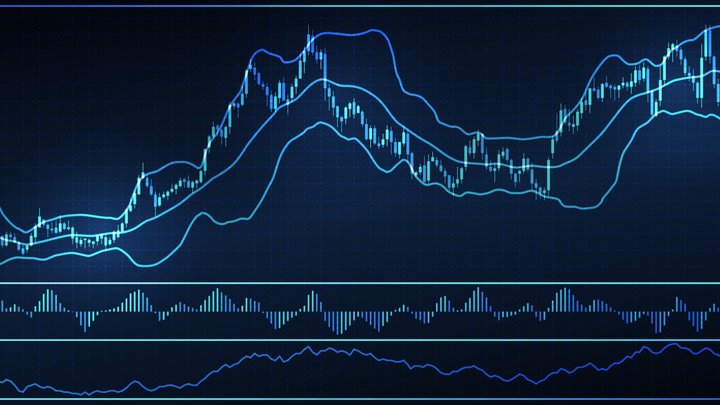
There are many options for traders looking to enter the Nasdaq futures markets. There are E and MNQ options, as well as micro equity index futures. All offer traders a way to get into the Nasdaq market without investing a huge amount of capital. These futures offer leverage and allow traders to trade on both the long and short sides. These futures can also be traded 24 hours per day, so they are available for trading at any hour of the day.
CME Group offers the E-mini Nasdaq Futures. These futures provide exposure to Nasdaq 100. This index is a modified capitalization-weighted index of the top 100 non-financial US large-cap companies. This index is called "tech-heavy" as more than half of its constituents are technology-focused. These futures are traded on CME Globex (an electronic trading platform). E-mini Nasdaq futures contracts trade at $5.00 each.
The Micro E-mini Nasdaq futures were launched by the CME Group in May of 2019. They are just a fraction of full-size Emini Nasdaq Futures and require no financial commitment. They can also be combined with Emini counterparts and offer traders more flexibility for managing positions.

MNQ Futures allow traders to trade on both the short and long sides of the Nasdaq 100. They trade virtually 24 hours a day electronically and are very popular among futures traders. MNQ Futures are sometimes used by traders to hedge stock exposure. Other traders trade MNQ for diversification.
CME Group released the Micro Emini Nasdaq 100 futures on May 1st, 2012. These futures are only a fraction the size of standard E-mini Nasdaq options, which offers traders lower financial risk and a lower financial commitment. This futures contract trades at $5 a contract and gives exposure to the Nasdaq 100.
The Micro Emini Nasdaq100 futures are an excellent way to get involved on the Nasdaq futures exchange. They provide traders with a low commitment and the chance to speculate on Nasdaq 100. These futures offer more flexibility in position management and trade nearly 24 hours a day, making it possible for traders to trade almost anywhere in the world.
CME Group offers the E-mini Nasdaq 100 contract, which is one of the most sought-after contracts on the market. This contract is priced at 20 times the value of the Nasdaq 100 index. This means that the value of the contract will decrease as the value of the Nasdaq 100 increases. The multiplier for the E-mini Nasdaq futures is $20 per point. This multiplier may change in response to market conditions.

CME Group offers the E-Mini Nasdaq 100 Index Futures Contract. It costs $5 per contract and allows exposure to E-Mini Nasdaq 100. This contract is considered a fifth of the Nasdaq 100 Index Futures contract. It has a limit of 10,000 equivalent contracts.
FAQ
What is a bond and how do you define it?
A bond agreement between two people where money is transferred to purchase goods or services. It is also known to be a contract.
A bond is typically written on paper and signed between the parties. The bond document will include details such as the date, amount due and interest rate.
The bond is used when risks are involved, such as if a business fails or someone breaks a promise.
Bonds are often used together with other types of loans, such as mortgages. The borrower will have to repay the loan and pay any interest.
Bonds can also help raise money for major projects, such as the construction of roads and bridges or hospitals.
A bond becomes due upon maturity. That means the owner of the bond gets paid back the principal sum plus any interest.
If a bond does not get paid back, then the lender loses its money.
What is the difference between a broker and a financial advisor?
Brokers specialize in helping people and businesses sell and buy stocks and other securities. They handle all paperwork.
Financial advisors are specialists in personal finance. They help clients plan for retirement and prepare for emergency situations to reach their financial goals.
Financial advisors can be employed by banks, financial companies, and other institutions. They could also work for an independent fee-only professional.
Take classes in accounting, marketing, and finance if you're looking to get a job in the financial industry. Additionally, you will need to be familiar with the different types and investment options available.
How are Share Prices Set?
The share price is set by investors who are looking for a return on investment. They want to make money with the company. So they purchase shares at a set price. The investor will make more profit if shares go up. If the share value falls, the investor loses his money.
An investor's main goal is to make the most money possible. They invest in companies to achieve this goal. This allows them to make a lot of money.
How do I invest my money in the stock markets?
You can buy or sell securities through brokers. A broker can sell or buy securities for you. You pay brokerage commissions when you trade securities.
Banks typically charge higher fees for brokers. Banks offer better rates than brokers because they don’t make any money from selling securities.
To invest in stocks, an account must be opened at a bank/broker.
If you hire a broker, they will inform you about the costs of buying or selling securities. This fee will be calculated based on the transaction size.
You should ask your broker about:
-
The minimum amount you need to deposit in order to trade
-
If you close your position prior to expiration, are there additional charges?
-
What happens if your loss exceeds $5,000 in one day?
-
How long can you hold positions while not paying taxes?
-
How much you are allowed to borrow against your portfolio
-
How you can transfer funds from one account to another
-
How long it takes to settle transactions
-
How to sell or purchase securities the most effectively
-
How to Avoid Fraud
-
How to get help for those who need it
-
If you are able to stop trading at any moment
-
If you must report trades directly to the government
-
Whether you are required to file reports with SEC
-
whether you must keep records of your transactions
-
whether you are required to register with the SEC
-
What is registration?
-
How does it impact me?
-
Who should be registered?
-
When do I need registration?
What is security in the stock market?
Security is an asset that generates income for its owner. Most security comes in the form of shares in companies.
A company may issue different types of securities such as bonds, preferred stocks, and common stocks.
The value of a share depends on the earnings per share (EPS) and dividends the company pays.
When you buy a share, you own part of the business and have a claim on future profits. If the company pays a payout, you get money from them.
Your shares can be sold at any time.
How does inflation affect the stock market
Inflation has an impact on the stock market as investors have to spend less dollars each year in order to purchase goods and services. As prices rise, stocks fall. Stocks fall as a result.
Statistics
- Individuals with very limited financial experience are either terrified by horror stories of average investors losing 50% of their portfolio value or are beguiled by "hot tips" that bear the promise of huge rewards but seldom pay off. (investopedia.com)
- Even if you find talent for trading stocks, allocating more than 10% of your portfolio to an individual stock can expose your savings to too much volatility. (nerdwallet.com)
- For instance, an individual or entity that owns 100,000 shares of a company with one million outstanding shares would have a 10% ownership stake. (investopedia.com)
- Our focus on Main Street investors reflects the fact that American households own $38 trillion worth of equities, more than 59 percent of the U.S. equity market either directly or indirectly through mutual funds, retirement accounts, and other investments. (sec.gov)
External Links
How To
How to Invest Online in Stock Market
You can make money by investing in stocks. There are many options for investing in stocks, such as mutual funds, exchange traded funds (ETFs), and hedge funds. The best investment strategy is dependent on your personal investment style and risk tolerance.
To be successful in the stock markets, you have to first understand how it works. This involves understanding the various types of investments, their risks, and the potential rewards. Once you understand your goals for your portfolio, you can look into which investment type would be best.
There are three main types: fixed income, equity, or alternatives. Equity is ownership shares in companies. Fixed income refers debt instruments like bonds, treasury bill and other securities. Alternatives are commodities, real estate, private capital, and venture capital. Each category has its pros and disadvantages, so it is up to you which one is best for you.
Once you figure out what kind of investment you want, there are two broad strategies you can use. One strategy is "buy & hold". You purchase some of the security, but you don’t sell it until you die. The second strategy is called "diversification." Diversification involves buying several securities from different classes. By buying 10% of Apple, Microsoft, or General Motors you could diversify into different industries. Buying several different kinds of investments gives you greater exposure to multiple sectors of the economy. It helps protect against losses in one sector because you still own something else in another sector.
Another important aspect of investing is risk management. You can control the volatility of your portfolio through risk management. A low-risk fund could be a good option if you are willing to accept a 1% chance. You could, however, choose a higher risk fund if you are willing to take on a 5% chance.
Learning how to manage your money is the final step towards becoming a successful investor. The final step in becoming a successful investor is to learn how to manage your money. You should have a plan that covers your long-term and short-term goals as well as your retirement planning. Sticking to your plan is key! You shouldn't be distracted by market fluctuations. Your wealth will grow if you stick to your plan.